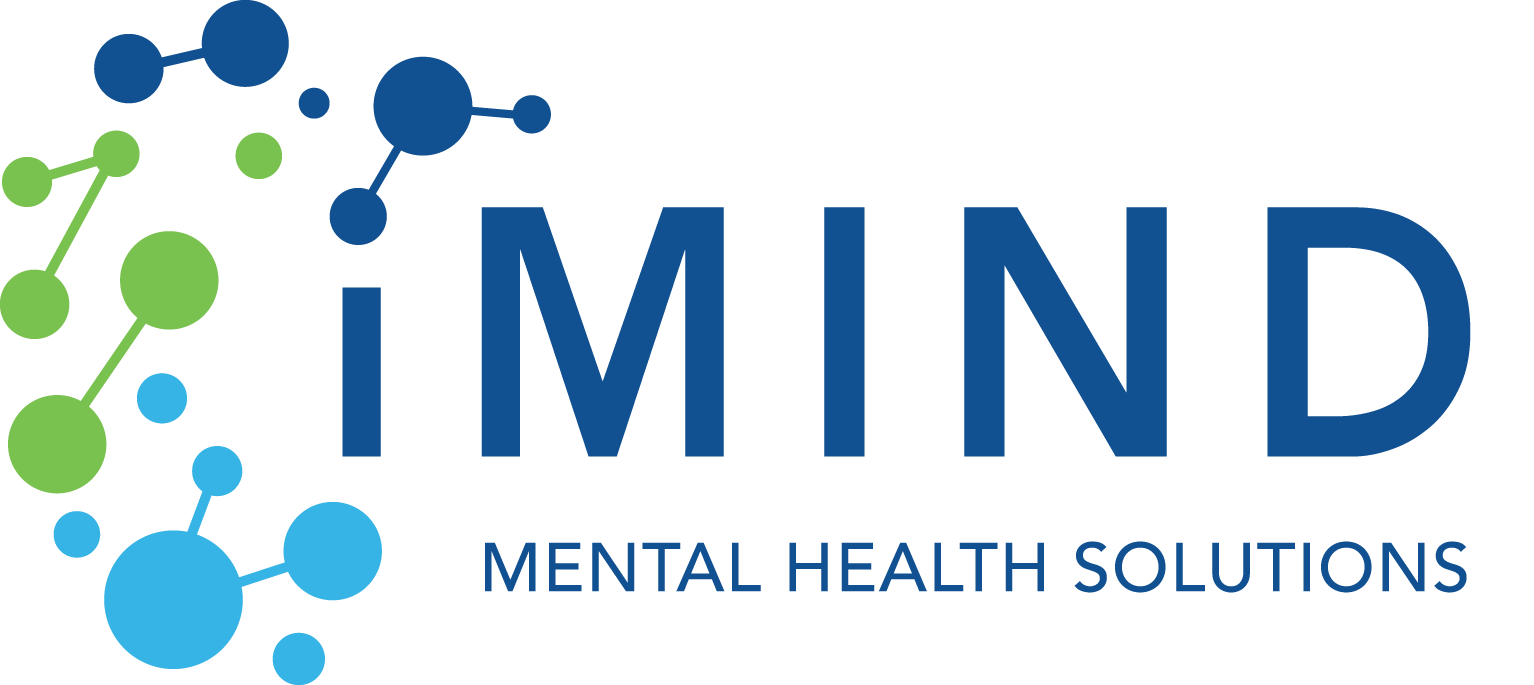A Shadow Over America: Why is Everybody Depressed?
Published By Justin Baksh, LMHC, MCAP
February 16, 2024

A dark cloud hangs over the American landscape, not one formed by rain or storm, but by a surge in mental health struggles. Depression, the insidious thief of joy and hope, has reached record highs in the US, casting a long shadow over millions of lives. Recent surveys, such as the one conducted by Gallup, paint a stark picture: nearly 30 percent of Americans now report having been diagnosed with depression in their lifetime, with almost 18 percent currently experiencing its grip.
These numbers, cold and unforgiving, represent a human story of untold suffering, and a desperate need to understand the forces driving this alarming trend. Why are we, in the midst of unprecedented technological advancement and material prosperity, experiencing such a collective descent into darkness?
Unraveling the Knot: Social and Economic Threads in Rising Depression Rates
The recent surge in depression rates in the US is not just a collection of individual struggles; it is a reflection of broader social and economic forces shaping our lives.

The Lingering Scars of the Pandemic
The COVID-19 pandemic left deep scars on our collective mental well-being. The COVID-19 pandemic wasn’t just a medical crisis; it was a social and economic earthquake. With social distancing measures, job losses, and a looming sense of uncertainty, the very fabric of our society seemed to unravel. This widespread disruption was the perfect instability for anxiety and depression to grow. Losing loved ones, routines, and a sense of normalcy added another layer of emotional strain.

The Double-Edged Sword of Social Media
Social media, while offering connection and community, can also be a breeding ground for depression. We’re constantly bombarded with curated portrayals of success and happiness, often unrealistic and unattainable. This creates unhealthy envy, and a sense that we are somehow lacking. This can lead to low self-esteem, especially when coupled with cyberbullying and negative content.

Societal Pressure and the Comparison Trap
The relentless pursuit of achievement and societal pressure to constantly compare ourselves to others can be suffocating. This toxic cocktail of ambition and expectation leaves many feeling like they’re never enough, fueling feelings of worthlessness and despair.

The Grip of Economic Hardship
Financial insecurity, job instability, and the ever-widening gap between the rich and the poor creates a constant undercurrent of stress and anxiety. For many, the basic necessities of life – housing, food, healthcare – are a constant struggle, leaving little room for the emotional bandwidth needed to navigate depression.

A Tangled Web, Not Isolated Strands
These factors don’t exist in isolation; they intertwine and amplify each other, creating a complex web where depression can thrive. The isolation of the pandemic can be exacerbated by loneliness on social media. The stress of societal pressure can be magnified by financial insecurity.
Vulnerability Under the Shadow: Depression Across Demographics
The rising tide of depression doesn’t lap at the shores of every life equally. Specific age groups and demographics face unique challenges that make them particularly susceptible to its grip.

Young Adults: A Generation Under Pressure (Prevalence of Depression: 21.5 percent)
Young adults aged 18 to 24 grapple with a potent cocktail of anxieties. According to the Centers for Disease Control and Prevention (CDC), nearly 22 percent of this age group experienced a major depressive episode in the past year. The pressure to excel academically, the uncertainties of career paths, and the constant social comparison fostered by social media create a perfect storm for emotional distress. These challenges, coupled with the developmental task of establishing independence and identity in a rapidly changing world, make young adults highly vulnerable to depression.

Women: Walking a Tightrope of Expectations (prevalence of depression: 37 percent)
Societal expectations and hormonal fluctuations create a unique vulnerability for women. Balancing professional aspirations with family responsibilities, navigating the complexities of relationships, and facing the persistent struggle against gender-based discrimination all contribute to stress and emotional strain. Previous studies by the National Institute of Mental Health (NIMH) show that women have a higher lifetime prevalence of major depressive episodes compared to men (10.3 vs. 6.2 percent). And this rate has risen dramatically — the 2023 Gallup poll showed that 37 percent of women now say they have received a depression diagnosis in their lifetime — more than one in three. Recognizing the specific challenges faced by women and fostering supportive environments that empower them to prioritize their well-being has never been more important for combating depression in this demographic.

Healthcare Workers: On the Front Lines of Both Illness and Empathy (prevalence of depression: 32.9 percent)
Those dedicated to caring for others often find themselves challenged by their own demons. Healthcare workers, exposed to constant trauma and burnout, face a significantly higher risk of depression compared to the general population. Research by the Journal of Affective Disorders found that 32.9 percent of healthcare workers met the criteria for depression during the pandemic. Witnessing suffering day after day, coupled with the emotional toll of the pandemic, can leave them feeling depleted and overwhelmed. Recognizing their vulnerability and providing access to mental health resources tailored to their unique needs is vital not only for their own well-being but also for the sustainability of our healthcare system.
Depression doesn’t discriminate, but our response must. By recognizing the diversity of experiences and adapting our solutions, we can work towards a future where mental wellbeing thrives for all. Stay tuned, as we move from understanding the problem to actively seeking solutions.
Cracks in the Foundation: Navigating the Mental Healthcare Landscape
Amidst the rising tide of depression, the cracks in our mental healthcare landscape become painfully clear. While societal and economic factors fuel the fire, the system meant to extinguish it struggles with its own limitations.

The Silent Shadow of Stigma
Perhaps the most insidious barrier is the persistent stigma surrounding mental health. Shame and fear of judgment often stop people from seeking help they desperately need, leaving them to suffer in silence. This stigma extends beyond individuals, influencing policy decisions and resource allocation, creating a vicious cycle that perpetuates the problem.

The Access Gap: Affordability and Availability
Even for those who overcome the stigma, accessing quality mental healthcare can be a daunting task. Many face prohibitive costs, restricted insurance coverage, or geographic barriers. Rural communities often grapple with a critical shortage of mental health professionals, leaving residents stranded in a healthcare desert. This access gap, where affordability and availability intersect, creates a system that fails to reach those who need it most.

A Workforce at Wit’s End
The burden falls not just on those seeking help, but on the mental health professionals themselves. The increasing demand, coupled with limited resources and inadequate compensation, pushes many towards burnout. This shortage further exacerbates the access gap, creating a situation where even those willing to reach out may struggle to find someone to listen.
These challenges intertwine, forming a formidable obstacle course for those navigating the mental healthcare landscape. Addressing them requires everything from tackling stigma through public education and awareness campaigns, to expanding access through increased funding, insurance reform, and telemedicine solutions. Investing in the mental health workforce, both in terms of numbers and pay, is also crucial to ensure a sustainable and efficient system.
Building a Brighter Future: Strategies for Combating Depression
The tide of depression doesn’t have to rise unchallenged. We can build a future where mental well-being is as comfortably addressed as physical well-being is now. Here are some key strategies to consider. From shining a light on the shadow through destigmatizing and educating about mental health to building bridges by expanding access to mental healthcare, there are many things we can do together to fight depression.
Fighting Depression on a Societal Level
- Demystifying Mental Health: Open and honest conversations about depression, anxiety, and other mental health challenges are crucial to dismantling stigma. Let’s encourage open communication about mental health on every level, from families to entire communities.
- Educating the Minds: Mental health education helps people understand and identify mental health struggles in themselves and others.
- Strengthening the Foundation: Increased funding for mental health services is crucial to expand capacity and make treatment more readily available. Public and private investments are needed to reinforce the mental health ecosystem.
- Bridging the Geographic Gap: Telehealth solutions can offer crucial access to mental health services in underserved areas and for individuals facing mobility challenges. Let’s leverage technology to bring care closer to those who need it.
- Proactive Outreach: Implementing mental health screening programs in schools, workplaces, and community settings can help identify individuals at risk before symptoms worsen. Early intervention can be the key factor in a successful treatment outcome.
- Nurturing the Workforce: Investing in training more mental health professionals is essential to address the existing shortage and ensure a sustainable long-term solution. To find and keep skilled, dedicated workers, living wages and high standards in working conditions are crucial.
- Weaving the Fabric of Social Connection: Fostering strong social connections and a sense of belonging within communities can provide vital support and combat the isolating effects of depression. Encourage community initiatives, volunteerism, and social activities to nurture connection.
- Laying the Foundations of Economic Stability: Economic insecurity and income inequality are significant contributors to stress and anxiety. Policies that promote economic stability, affordable housing, and access to basic necessities can create a more supportive environment for mental well-being.
- Reclaiming the Positive Space of Social Media: Addressing cyberbullying, unrealistic portrayals of life and the other negative impacts of social media, is crucial. Promoting responsible digital citizenship and encouraging critical thinking about online content can create a healthier online environment.
- Advocating for Change: Supporting policies that promote mental health awareness, access to affordable care, and workplace protections can create a systemic shift towards prioritizing mental well-being. Lobbying for change and holding elected officials accountable can make a real difference.
By tackling the problem on multiple fronts, from educating and empowering individuals to strengthening the healthcare system and addressing societal concerns, we can build a future where depression is no longer a silent storm, but a manageable challenge met with understanding, support, and effective intervention. Remember, a healthy society is one where mental well-being thrives for all. Let’s rise to the challenge together and build a brighter future, one free from the shadow of depression.
- Centers for Disease Control and Prevention. (2023). FastStats – Depression. Centers for Disease Control and Prevention.
- National Institute of Mental Health. (2023, July). Major Depression. National Institute of Mental Health.
- Olaya, B., Pérez-Moreno, M., Bueno-Notivol, J., Gracia-García, P., Lasheras, I., & Santabárbara, J. (2021). Prevalence of Depression among Healthcare Workers during the COVID-19 Outbreak: A Systematic Review and Meta-Analysis. Journal of Clinical Medicine, 10(15), 3406.
- Sforza, L. (2023, May 17). Depression rates hit new high in Gallup polling. The Hill.



